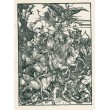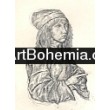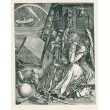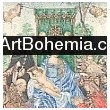Košík
0
x
Produkty
(prázdný)
Žádné díla
Bude determinováno
Dopravné a balné
0 Kč
Celkem
Produkt byl úspěšně přidán do nákupního košíku
Počet
Celkem
0 ks zboží.
1 dílo v košíku.
Za díla:
Doručení a balné:
Bude determinováno
Celkem
Kategorie
- grafiky/tisky
- obrazy
- kresby
- plakáty
- fotografie
- exlibris
- bibliofilie
- knihy/katalogy
- starožitnosti
- sochy/plastiky
- sklo
-
Hnutí
- abstrakce
- art-deco
- čs.avantgarda/moderna
- expresionismus
- fauvismus
- impresionismus
- kubismus
- naivní umění
- op-art
- poetismus
- pop-art
- realismus
- secese
- sociální kritika
- soudobá tvorba
- surrealismus
- světová avantgarda/moderna
- Škola prof. Albína Brunovského
- Škola prof. Zdeňka Sklenáře
- Škola prof.Julia Mařáka - mařákovci
- Žánr
- Zprávy/NEWS
- Doporučujeme
Nová díla
-

-

Dobrou chuť
4 840 Kč -

W.A.Mozart - Don Giovanni
3 872 Kč
-

Dívčí profil I
194 Kč -80% 968 Kč
Hnutí
- abstrakce
- art-deco
- čs.avantgarda/moderna
- expresionismus
- fauvismus
- impresionismus
- kubismus
- naivní umění
- op-art
- poetismus
- pop-art
- realismus
- secese
- sociální kritika
- soudobá tvorba
- surrealismus
- světová avantgarda/moderna
- Škola prof. Albína Brunovského
- Škola prof. Zdeňka Sklenáře
- Škola prof.Julia Mařáka - mařákovci
Žánr
NEJŽÁDANĚJŠÍ UMĚLCI
- Anderle Jiří
- Augustovič Peter
- Benca Igor
- Beneš Karel
- Bím Tomáš
- Born Adolf
- Brun Robert
- Brunovský Albín
- Boštík Václav
- Bouda Cyril
- Bouda Jiří
- Braque Georges
- Brázda Jiří
- Buffet Bernard
- Cézanne Paul
- Čapek Josef
- Čápová Hana
- Dalí Salvador
- Demel Karel
- Dudek Josef
- Dufy Raoul
- Effel Jean
- Felix Karol
- Filla Emil
- Giacometti Alberto
- Grosz George
- Chagall Marc
- Istler Josef
- Janeček Ota
- Jiřincová Ludmila
- Kandinsky Wassily
- Kĺúčik Peter
- Komárek Vladimír
- Kulhánek Oldřich
- Kupka František
- Lada Josef
- Lhoták Kamil
- Matisse Henri
- Miró Joan
- Mucha Alfons
- Muzika František
- Picasso Pablo
- Pileček Jindřich
- Reynek Bohuslav
- Sukdolák Pavel
- Suchánek Vladimír
- Svolinský Karel
- Šíma Josef
- Špála Václav
- Švabinský Max
- Švengsbír Jiří
- Tichý František
- Toulouse-Lautrec Henri de
- Toyen
- Trnka Jiří
- Váchal Josef
- Vik Karel
- Warhol Andy
- Zábranský Vlastimil
- Zoubek Olbram
- Zrzavý Jan
Seznam děl umělce Dürer Albrecht
Albrecht Dürer (1471-1528) was the son of a goldsmith who settled in Nuremberg in 1455, and in 1467 married his master's daughter. The young Albrecht was first apprenticed to his father, and was then bound for three years to the painter Michael Wolgemut,
Albrecht Dürer (1471-1528) was the son of a goldsmith who settled in Nuremberg in 1455, and in 1467 married his master's daughter. The young Albrecht was first apprenticed to his father, and was then bound for three years to the painter Michael Wolgemut, whose large workshop also produced woodcut book illustrations for the printer Anton Koberger, Dürer's godfather.
He traveled for four years, from Easter 1490, visiting Colmar, Basle, and Strasbourg, and in May 1494, he returned to Nuremberg and married. In the autumn of 1494, he went to Venice. During this visit, he met Giovanni Bellini, whom he greatly admired, and painted several works for the German merchants of Venice, which shows some knowledge of Leonardo. On his return, he intensified the learned side of his art and personality; he studied mathematics, geometry, Latin, and humanist literature, and sought the company of scholars rather than that of his fellow artisans. This departure in mode of life and thought was directly traceable to the influence of Leonardo and Mantegna and the example of Bellini, and though it was common enough in Italy, it was unprecedented in Germany.
In 1512, he became court painter to the Emporer Maximillian, and in July 1520, he journeyed to the Netherlands to obtain from his successor, Charles V, the ratification of his post and pension. He saw the coronation of the new Emperor at Aachen and was confirmed in his office, visited Antwerp, Brussels, Malines, Cologne, Middleburg, Brugues and Ghent, and was honored and feted all along the route. He returned home in July 1521, and despite ill-health resulting from fever, probably contracted in the swamps of Zeeland, where he had ventured in the hope of seeing a dead whale, he worked unremittingly until his death.
Dürer's enormous uvre consists of woodcuts and engravings, paintings, and preparatory and independent drawings, and he also wrote treatises on measurement, fortification, proportion, and artistic theory, besides his detailed diary of his Netherlands journey. He was the main channel through which Italian Renaissance forms and ideas were introduced into the North, and he combined these with the individualism general in German art and inherited from the Gothic tradition.
His greatest influence was through his graphic work. He is one of the supreme masters of woodcut and copper engravings, and these easily transportable models carried his technique, subjects, designs, and style all over Europe, and even had a considerable influence in Italy. He extended the range of woodcut and engravings by perfecting the technique of both, and raised the standard of graphic art by the training he gave to the workmen who executed his designs.
In: http://www.centaurgalleries.com/Artists/Artist.cfm?ArtistID=00048
* * * * * Dürer.
German family of artists. Albrecht Dürer the elder (1427–1502), a goldsmith in Nuremberg, was the first teacher of his famous son, (1) Albrecht Dürer, who is renowned for his paintings, drawings, watercolours, prints and theoretical writings. Albrecht the younger trained his brother (2) Hans Dürer, a painter of mostly religious subjects who became court painter in Poland. A third brother, Endres [Andreas] Dürer (1486–1555), became a master goldsmith in Nuremberg in 1514 and carried on their father’s business, though no work can be attributed to him with any certainty.
The following members have entries:
(1) Albrecht Dürer
(2) Hans Dürer
There are more than 45,000 articles in The Grove Dictionary of Art. To access the rest of this article, including the bibliography, subscribe to www.groveart.com. In: http://www.artnet.com/library/02/0241/T024180.asp
Zobrazit
He traveled for four years, from Easter 1490, visiting Colmar, Basle, and Strasbourg, and in May 1494, he returned to Nuremberg and married. In the autumn of 1494, he went to Venice. During this visit, he met Giovanni Bellini, whom he greatly admired, and painted several works for the German merchants of Venice, which shows some knowledge of Leonardo. On his return, he intensified the learned side of his art and personality; he studied mathematics, geometry, Latin, and humanist literature, and sought the company of scholars rather than that of his fellow artisans. This departure in mode of life and thought was directly traceable to the influence of Leonardo and Mantegna and the example of Bellini, and though it was common enough in Italy, it was unprecedented in Germany.
In 1512, he became court painter to the Emporer Maximillian, and in July 1520, he journeyed to the Netherlands to obtain from his successor, Charles V, the ratification of his post and pension. He saw the coronation of the new Emperor at Aachen and was confirmed in his office, visited Antwerp, Brussels, Malines, Cologne, Middleburg, Brugues and Ghent, and was honored and feted all along the route. He returned home in July 1521, and despite ill-health resulting from fever, probably contracted in the swamps of Zeeland, where he had ventured in the hope of seeing a dead whale, he worked unremittingly until his death.
Dürer's enormous uvre consists of woodcuts and engravings, paintings, and preparatory and independent drawings, and he also wrote treatises on measurement, fortification, proportion, and artistic theory, besides his detailed diary of his Netherlands journey. He was the main channel through which Italian Renaissance forms and ideas were introduced into the North, and he combined these with the individualism general in German art and inherited from the Gothic tradition.
His greatest influence was through his graphic work. He is one of the supreme masters of woodcut and copper engravings, and these easily transportable models carried his technique, subjects, designs, and style all over Europe, and even had a considerable influence in Italy. He extended the range of woodcut and engravings by perfecting the technique of both, and raised the standard of graphic art by the training he gave to the workmen who executed his designs.
In: http://www.centaurgalleries.com/Artists/Artist.cfm?ArtistID=00048
* * * * * Dürer.
German family of artists. Albrecht Dürer the elder (1427–1502), a goldsmith in Nuremberg, was the first teacher of his famous son, (1) Albrecht Dürer, who is renowned for his paintings, drawings, watercolours, prints and theoretical writings. Albrecht the younger trained his brother (2) Hans Dürer, a painter of mostly religious subjects who became court painter in Poland. A third brother, Endres [Andreas] Dürer (1486–1555), became a master goldsmith in Nuremberg in 1514 and carried on their father’s business, though no work can be attributed to him with any certainty.
The following members have entries:
(1) Albrecht Dürer
(2) Hans Dürer
There are more than 45,000 articles in The Grove Dictionary of Art. To access the rest of this article, including the bibliography, subscribe to www.groveart.com. In: http://www.artnet.com/library/02/0241/T024180.asp
Zobrazeno 1 – 4 z 4 položek
Zobrazeno 1 – 4 z 4 položek




